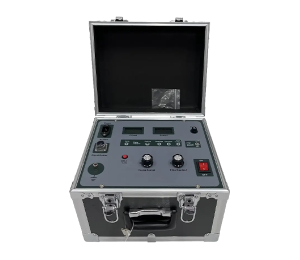 English
English


dielectric resistance test
Understanding Dielectric Resistance Testing
Dielectric resistance testing is a crucial procedure used in various industries to ensure the safety and reliability of electrical equipment. This test measures the dielectric strength, which is the ability of an insulating material to withstand electric stress without breakdown. As technology advances and electrical systems become more complex, the importance of dielectric resistance testing has grown exponentially.
What is Dielectric Resistance?
Dielectric resistance refers to the ability of an insulating material to resist the flow of electrical current. It is an essential property of materials used in electrical applications, as poor insulation can lead to short circuits, equipment failure, or even catastrophic accidents. The dielectric resistance test involves applying a high voltage to an insulated component for a specified time to assess its insulation integrity.
The Testing Process
The dielectric resistance test is typically performed using a megohmmeter or insulation resistance tester
. The testing procedure involves several steps1. Preparation Before conducting the test, ensure that the equipment is properly isolated from any power source. This is critical for safety.
2. Connecting the Tester The megohmmeter is connected to the insulation of the device being tested. One lead is attached to the conductor or the core, while the other is connected to the casing or ground.
3. Applying Voltage The tester applies a high voltage, usually between 250V and 5kV, depending on the equipment and its rated insulation voltage. This high voltage exposes the insulation to stress conditions similar to those it would encounter during normal operation.
dielectric resistance test

4. Measuring Resistance The megohmmeter measures the resistance of the insulation, usually expressed in megohms (MΩ). The reading indicates the quality of the insulation higher resistance values generally imply better insulation performance.
5. Documentation All results should be documented meticulously for future reference and compliance with safety standards.
Interpreting Results
The results of the dielectric resistance test can vary based on the type and condition of the insulation material. Generally, a resistance value of 1 MΩ or higher is considered acceptable for most applications. However, specific standards set by organizations such as the Institute of Electrical and Electronics Engineers (IEEE) should be adhered to for different equipment types.
A drastic drop in resistance values could signal degradation or failure of the insulating material, indicating the need for repair or replacement. Regular testing helps identify potential issues before they result in significant failures.
Importance in Industry
In industries such as power generation, manufacturing, and telecommunications, dielectric resistance testing is vital for ensuring equipment reliability and safety. High voltage apparatus, transformers, and circuit breakers are all subject to dielectric testing to prevent unplanned outages or safety hazards. Additionally, these tests play a role in compliance with regulatory standards, helping organizations avoid costly fines and ensuring the operational integrity of their systems.
Conclusion
Dielectric resistance testing is a necessary practice in modern electrical maintenance and safety protocols. By regularly assessing the condition of insulation, industries can prevent failures, enhance system reliability, and protect both personnel and assets. As the reliance on electrical systems continues to grow, embracing comprehensive testing methods will remain essential in fostering a safe and efficient working environment.
-
Differences between open cup flash point tester and closed cup flash point testerNewsOct.31,2024
-
The Reliable Load Tap ChangerNewsOct.23,2024
-
The Essential Guide to Hipot TestersNewsOct.23,2024
-
The Digital Insulation TesterNewsOct.23,2024
-
The Best Earth Loop Impedance Tester for SaleNewsOct.23,2024
-
Tan Delta Tester--The Essential Tool for Electrical Insulation TestingNewsOct.23,2024





